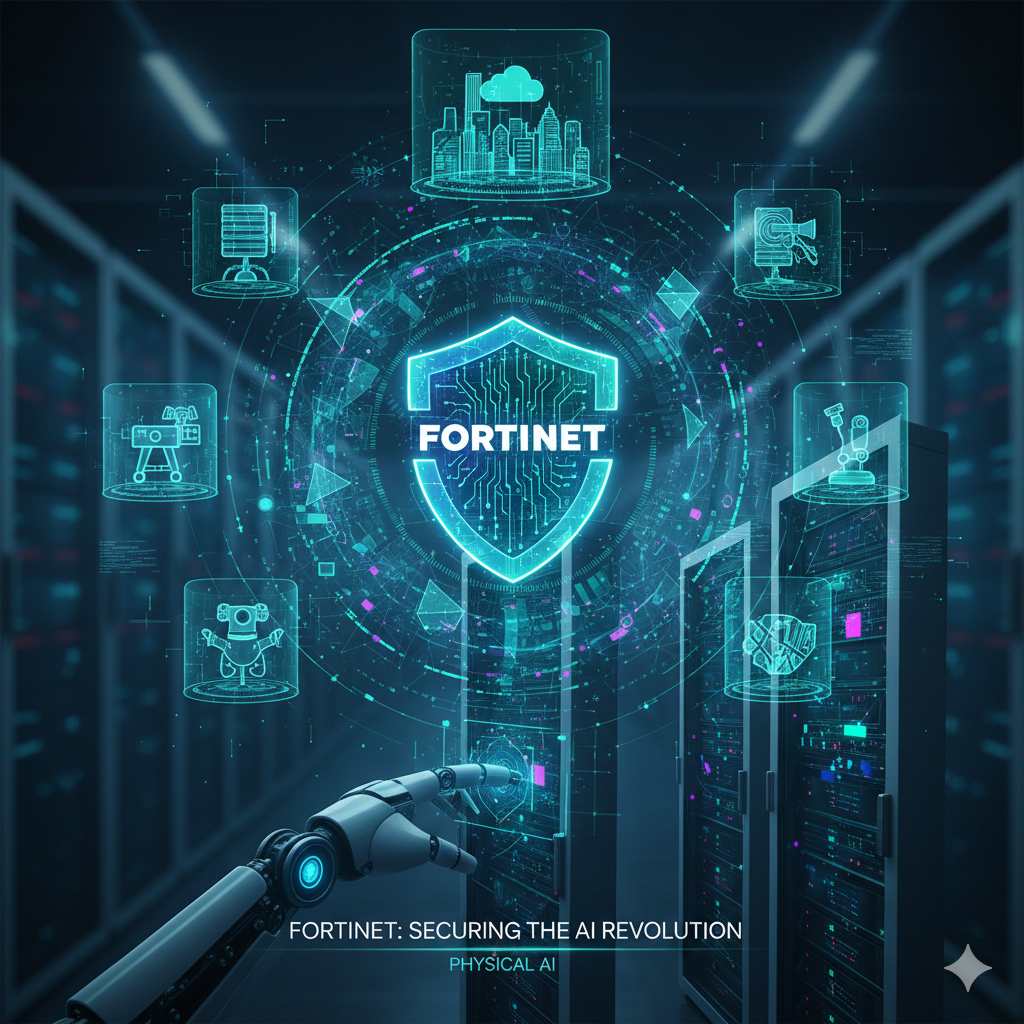Updates: Fortinet - The Convergence of Network, Security, and the Physical World

Summary
- Fortinet’s single-OS, ASIC-accelerated architecture gives it a durable structural edge as networking, security, and compute converge across cloud, edge, and data centers.
- Dual AI tailwinds—securing AI workloads and AI-enabling SecOps—position Fortinet as one of the few vendors leveraged to both the AI data center boom and the coming AI-driven refresh at the edge.
- A $1bn+ fast-growing OT franchise and the emerging “physical AI” footprint (robots, industrial automation, IoT) expand Fortinet’s addressable market where network-based enforcement is the only practical way to secure agentless devices.
- Gartner’s pivot to hybrid SASE validates Convequity’s SASO model and Fortinet's long held vision for converged networking and security.
- With mid-teens growth, 40–45% long-term FCF margins, ~66% ROIC, and one of the most aggressive buyback programs in cybersecurity, today’s ~$80 “stagnation” valuation looks misaligned with a realistic ~$127/share base case.
Executive Summary
FTNT remains one of the most structurally advantaged companies in cybersecurity. Despite sentiment being anchored around modest growth expectations, its architectural coherence, custom ASIC design, and expanding relevance across both digital and physical AI networks position it for durable outperformance.
The stock’s current valuation effectively bakes in only high-single- to low-double-digit growth. With product sales reaccelerating, new SASE momentum, a deepening OT/IoT security footprint, and an AI-driven upgrade cycle ahead, we think mid- to high-teens growth is achievable. Layered on top of a 40%+ FCF margin and one of the most aggressive buyback programs in cybersecurity, the risk/reward looks asymmetric.
FTNT’s edge stems from the convergence of networking, security, and compute under a single operating system (FortiOS). This unified foundation has allowed the company to stay ahead of each major architectural shift — from on-prem firewalls to SD-WAN to SASE and now the hybrid AI era. While rivals stitched together acquisitions, FTNT’s organic model kept its codebase singular, efficient, and scalable. That purity is now paying off: it is the only vendor delivering converged networking and security across cloud, edge, and data center with performance and cost advantages amplified by proprietary ASICs.
Architectural Moat: The Single OS Advantage
Fortinet’s Security Fabric is the backbone of its differentiation. Built entirely on FortiOS, it spans next-gen firewalls, SD-WAN, SASE, switches, access points, and endpoints — all sharing a common telemetry model, policy language, and control plane. The result is a single “brain” coordinating security, networking, and access decisions across the environment.
This design purity stems from Fortinet’s deliberate avoidance of M&A. Where peers like Palo Alto Networks, Cisco, and Check Point have bolted on new capabilities via acquisitions — each with its own codebase, API schema, and update cadence — Fortinet has grown organically. The payoff is visible: its stack operates as one unified organism rather than a federation of stitched-together products.
Competitors suffer from integration debt: multiple OSs, overlapping management consoles, and inconsistent data models that inhibit automation and AI correlation. A newly acquired CASB or EDR module often creates an isolated telemetry silo, forcing translation layers that dilute context. Fortinet, by contrast, keeps every function natively aware of every other — no normalization step, minimal loss of fidelity.
Identity is a useful illustration. Many years ago now, Fortinet was able to build a high-level IAM (Identity & Access Management) and MFA, and more recently PAM (Privileged Access Management) as native extensions of the same architecture, rather than as bolted-on sidecars. PAM in particular is technically demanding: high-risk accounts must be vaulted, rotated, and brokered through just-in-time sessions, with tamper-resistant recording and policy decisions that span legacy AD, OT equipment, and cloud resources. Doing this inside the same OS and control plane that already governs network policy reduces the number of moving parts and makes it easier to keep identity, device, and network context aligned. By contrast, Palo Alto Networks historically stayed out of identity, relying on partners for IAM/MFA and PAM; its recent move to acquire CyberArk for $25bn underlines both how central identity has become and how hard it is to retrofit high-assurance PAM into a fragmented, multi-OS stack.
This coherence also underpins Fortinet’s emerging AI advantage. Because all telemetry — from network flow to device posture and SOC alerts — exists in a single schema, AI models can retrieve and reason over a complete, end-to-end picture rather than fragments. Detection and enforcement happen against the same data structures and through the same control plane.
By contrast, competitors must first reconcile fragmented datasets — firewalls, endpoints, identity, cloud security — before models can be trained or used operationally. Each domain tends to use its own log format, time base, and naming scheme, so correlation layers have to normalise and stitch events together. That extra step is slow and inevitably loses some detail. Because the resulting picture is incomplete and occasionally inconsistent, security teams face an awkward choice. If they set thresholds conservatively, only acting on very high-confidence signals or multiple corroborating indicators, they reduce the risk of breaking legitimate traffic but allow more real threats to slip through. If they lower thresholds to compensate, the system fires off a much larger volume of alerts with limited context, creating the “alert fatigue” problem that many SOCs complain about: too much noise, too many tickets, and not enough time to separate real incidents from background chatter.
Fortinet’s single-OS design reduces that ambiguity. The component that detects an anomaly is working from the same data model as the component that enforces the response, with user, device, application, and network context already aligned. That allows models and rules to operate at more calibrated thresholds: they can suppress many of the obviously benign events that would otherwise generate noise, while still acting quickly on patterns that are risky in a given context (for example, a privileged account accessing an unusual asset from an unusual location). Enforcement is then pushed through one control plane across firewalls, switches, and access infrastructure. The outcome is not just faster response, but a more manageable alert stream and a better trade-off between missed detections, false positives, and SOC workload.
In short, Fortinet’s architecture isn’t just simpler — it is structurally better suited to production AI in security operations. A clean, single-OS design produces fewer, higher-fidelity alerts, gives models consistent end-to-end visibility, and lets the same control plane both learn from and act on those signals, making it easier to turn AI outputs into concrete, network-wide changes over time.




